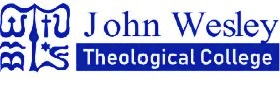Dress conflicts in XI-XII. century
DOI:
https://doi.org/10.59531/ots.2024.2.2.67-74Keywords:
chivalric culture, reform monasticism, heretics, apostolic way of life, mendicant ordersAbstract
Due to crisis symptoms after 476, we do not encounter opposition to luxury between the 5th and 10th centuries. The chivalric culture emerging from the 11th century and the opulence accompanying it, revived fashion. The court's young men appeared in short dresses and shaved, in earth-sweeping cloaks, with long beards and curly hair. The religious movements (reform friars, heretics, itinerant preachers) that emerged from the 12th century, with their appearance reminiscent of hermits and apostles came into conflict with the clergy being resplendent in ornate dress and as well as with their evangelical lifestyle with ecclesiastical luxury. The papacy took steps successfully against the efforts threatening its power. It has abolished wildings; and received into the Church those it could. At the beginning of the 13th century, two mendicant orders approved by the Pope were established. The Franciscans and the Dominicans adopted the hermit's wear, the apostolic way of life, and lived in poverty by begging. They were popular among the people, thus they were able to make the wealth of the temples to be forgotten. At the same time, it was the starting point for their opposition to the secular luxury and opulence emerging in the 14th century.
References
Frugoni (1989): Arnaldo da Brescia nelle fonti del secolo XII. – Giulio Einaudi,Torino.
Alatri, M. (1986): Eretici e inquisitori in Italia. I. Il Duecento. – Collegio San Lorenzo da Brindisi, Ist. Storico dei Cappuccini, Roma.
Ambrosioni, A. (1993): Gli Umiliati: punti di arrivo e prospettive di ricerca. – In: Ambrosioni, A.: Movimenti religiosi del XII secolo tra ortodossia et eterodossia: il caso degli Umiliati. – Cusl, Milano.
Borst, Arno (1953): Die Katharer. – In: MGH 12/84–89, Stuttgart.
Craveri, Marcello (1996): L’Eresia. Dagli gnostici a Lefebvre, il lato oscuro del cristianesimo. – Milano, Mondadori.
Dal Pino, Francesco (1984): Il laicato italiano tra eresia e proposta pauperistico-evangelica nei secoli XII-XIII. – Padova.
Giesebrecht, W. von (1885): Geschichte der deutschen Kaiserzeit. – Leipzig.
Gombos F. Albin (szerk.) (1913): Középkori Krónikások XV-XVI. – Budapest.
Hinnebusch, J. F. (1972): The Historia occidentalis of Jacques de Vitry. A Critical Edition. ¬– University Press, Fribourg.
Klaniczay G. (1982): Öltözködés és ideológia a középkorban. – In: Klaniczay G., S. Nagy K. (szerk.): Divatszociológia. – Tömegkommunikációs Kutatóközpont, Budapest.
Klaniczay G. (1990): A civilizázió peremén. – Magvető, Budapest.
Manselli, R. (1963): L’eresia del male. – Morano, Napoli.
Manselli, R. (1975): Studi sulle eresie del secolo XII. – Istituto storico italiano per il medio evo, Roma.
Merlo, G. G. (1989): Eretici ed eresie medievali. – Il mulino, Bologna.
Merlo, G. G. (1984): Valdesi e valdismi medievali. – Claudiana, Torino.
Merlo, G. G. (1996): Contro gli eretici. – Il Mulino, Bologna.
Migne, Jacques Paul (1954): Patrologiae Cursus Completus. Series Latina (PL). – Turnhout.
Pegrari, M. (a cura di) (1991): Arnaldo da Brescia e il suo tempo. – Brescia.
Platelle, H.(1975): Le problème du scandale: les nouvelles modes masculines aux XIe et XIIe siècle. – Revue belge de philologie et d’histoire 53(4): 1071–1096.
Puskely M. (1998): Kétezer év szerzetessége. Szerzetesség- és művelődéstörténeti enciklopédia I–II. – Dinasztia Kiadó-ház, Budapest.
Vauchez, A. (1993): Movimenti religiosi fuori dell’ortodossia nei secoli XII e XIII. – In: Vauchez, A. (a cura di): Storia dell’Italia religiosa, I. L’Antichità e il Medioevo. – Laterza, Roma-Bari, 311–347.
Zanoni, L. (1911): Gli Umiliati nei loro rapporti con l’eresia, l’industria della lana ed i Comuni nei secoli XII e XIII, sulla scorta di documenti inediti. – Hoepli, Milano.
Downloads
Published
How to Cite
Issue
Section
License

This work is licensed under a Creative Commons Attribution-NonCommercial-NoDerivatives 4.0 International License.
OTS articles are subject to the Creative Commons Attribution-NonCommercial-NoDerivates 4.0 International Licenses Copyright Terms.




